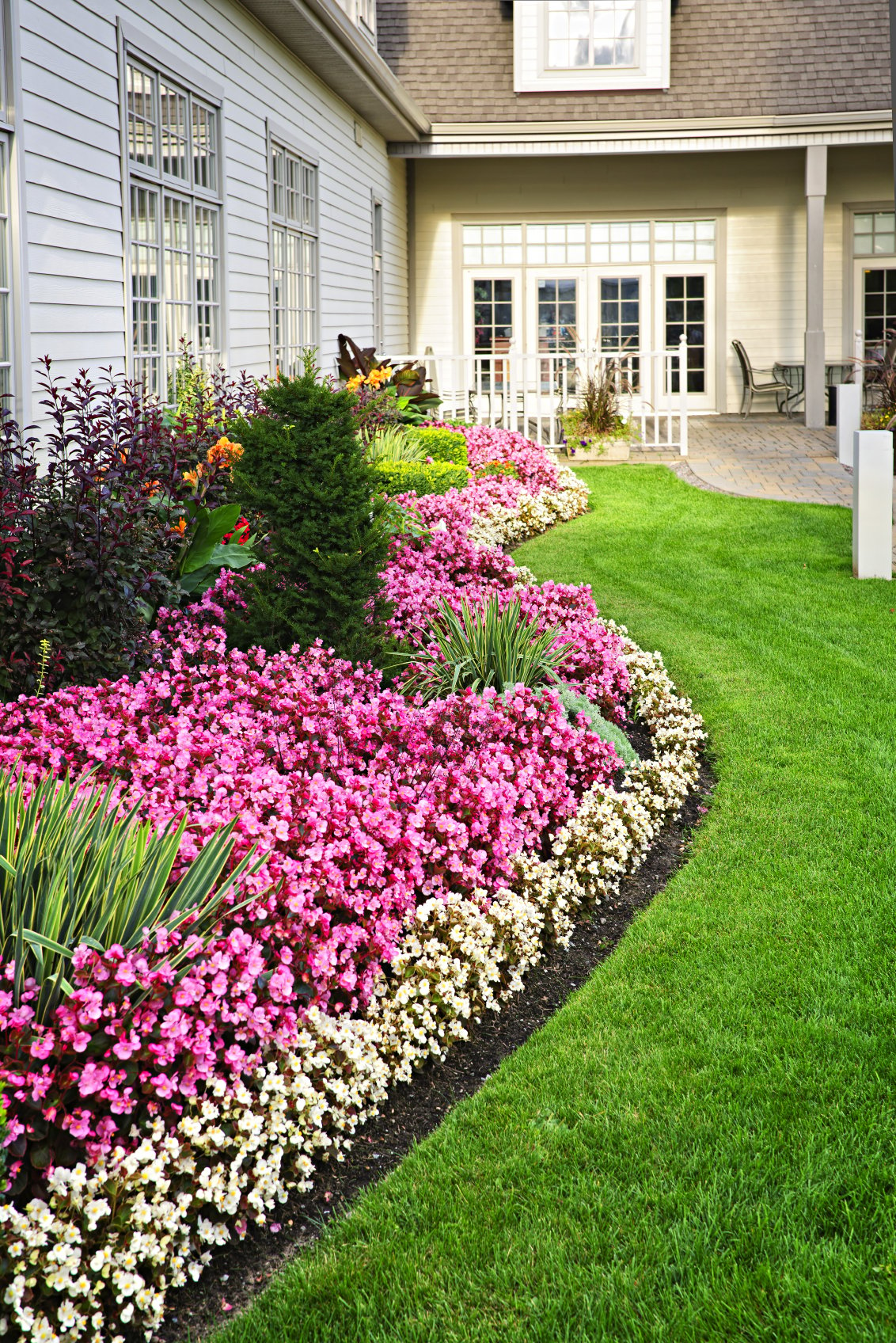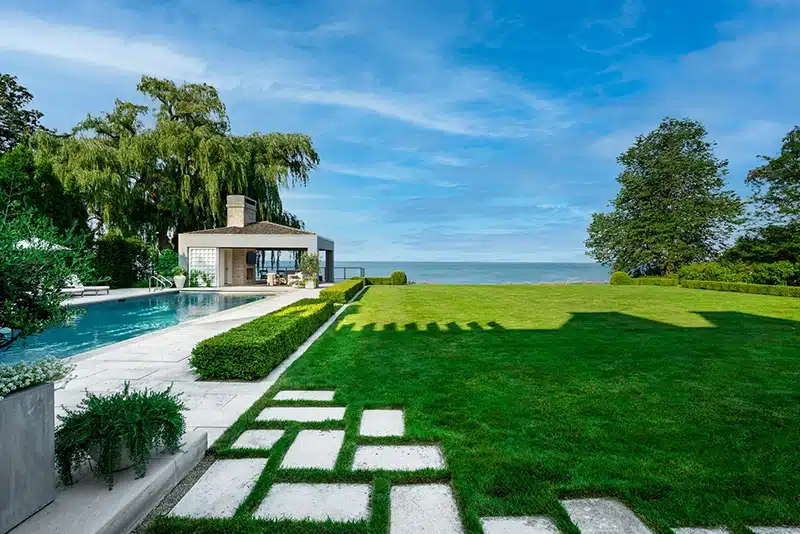The Relevance of Comprehending Various Kinds Of Landscaping for Your Garden
Understanding the numerous kinds of landscape design is an important component in crafting a yard that not just shows personal preference yet likewise meets eco-friendly demands. Each landscaping design-- be it formal, cottage, lasting, or city-- gives distinct benefits that can considerably affect the total wellness and visual appeals of your outdoor area.
Advantages of Landscaping Knowledge
Understanding the basics of landscape design provides countless advantages for both beginner and experienced garden enthusiasts alike. A solid grasp of landscaping concepts makes it possible for individuals to create aesthetically attractive and practical outdoor spaces that straighten with their individual preferences and the certain qualities of their yards.
One considerable benefit is boosted environmental health and wellness. Understanding of native plants and lasting techniques permits garden enthusiasts to cultivate communities that advertise biodiversity while decreasing the demand for chemical plant foods and pesticides. In addition, recognizing dirt kinds and water drainage can lead to healthier plant growth and minimized erosion.
Landscape design understanding likewise enhances the aesthetic worth of a property. By discovering concerning design elements such as structure, range, and color, gardeners can produce natural and inviting landscapes that boost curb appeal. This not only raises personal pleasure but can additionally boost property worth.
Furthermore, informed garden enthusiasts can save time and resources. Identifying the right plants for specific conditions, such as light and dampness degrees, makes certain that efforts are not thrown away on inappropriate choices. Eventually, an extensive understanding of landscape design equips individuals to make informed choices, fostering an extra rewarding gardening experience.
Overview of Landscaping Kinds
Landscape design incorporates a variety of strategies and styles, each tailored to meet the one-of-a-kind requirements and preferences of gardeners. Comprehending these diverse kinds is vital for creating an exterior space that lines up with individual tastes and environmental considerations.
One prominent kind is traditional landscape design, identified by organized designs, distinct flowerbeds, and making use of symmetrical plantings. This design typically emphasizes a feeling of order and consistency within the yard - Landscape. In comparison, naturalistic landscape design concentrates on simulating the beauty of nature, utilizing native plants and natural forms to create a more kicked back and informal environment
Lasting landscape design has actually gotten grip, promoting green practices that save water and decrease chemical use. This approach typically integrates xeriscaping, which utilizes drought-resistant plants suitable for dry climates. Furthermore, metropolitan landscape design addresses the obstacles of restricted area in city environments, commonly utilizing vertical gardens and rooftop rooms to maximize plant.
Formal Landscape Design Clarified
Defined by its thorough design and structured aspects, formal landscaping develops an atmosphere of beauty and refinement in outside rooms. This design highlights symmetry, geometric forms, and distinct lines, frequently integrating polished bushes, topiaries, and orderly blossom beds. The total effect is a polished and refined environment that attracts interest to building functions and improves the appeal of the surrounding landscape.
In official landscaping, pathways are typically straight and might be lined with consistent materials such as block or rock. These courses often lead to prime focus such as water fountains, statues, or ornamental trees, additionally enhancing the structured nature of the design. Color schemes tend to be extra minimal, focusing on harmonious combinations that promote a calm ambience.
Water features in official landscapes are normally created with accuracy, typically appearing as rectangle-shaped or circular swimming pools. The cautious placement of plants is critical, with species selected for their capacity to maintain a clean look throughout the periods. Overall, formal landscape design is suitable for those who appreciate order and elegance, offering a classic aesthetic that can considerably raise the value and allure next of outdoor spaces.
Cottage Garden Attributes
Home gardens frequently stimulate a feeling of beauty and whimsy, mixing a selection of plants in a relatively careless yet unified plan. Characterized by their lush, casual layout, these gardens usually include an eclectic mix of flowering perennials, veggies, annuals, and natural herbs. This varied planting not only produces aesthetic rate of interest yet likewise attracts valuable insects and promotes a well balanced ecosystem.
A vital feature of home yards is their use typical materials and structures. Stone paths, rustic fence, and wooden trellises are frequently incorporated to improve the garden's charming allure. Furthermore, the inclusion of seating locations, such as benches or arbors, motivates relaxation within this tranquil environment.
Shade plays a considerable role in home gardens, with a focus on soft pastels and vivid tones that stimulate a sense of nostalgia. Blossoms like hollyhocks, foxgloves, and roses are staples, usually intermingled with fragrant herbs such as lavender and thyme.
Home gardens mirror a viewpoint of welcoming nature's unpredictability, causing an one-of-a-kind and inviting area. By focusing on biodiversity and visual appeal, they develop a my explanation picturesque setup for both yard fanatics and informal onlookers alike.
Sustainable Landscape Design Practices
Integrating lasting landscape design methods is vital for developing eco friendly gardens that flourish while decreasing their ecological impact. Commercial Landscaping. Lasting landscaping concentrates on the effective use sources, promoting biodiversity, and enhancing the native environment
One trick technique is picking native plants, which are well-adapted to regional problems and call for much less water, plant food, and chemicals. This not just preserves sources but likewise sustains neighborhood wild animals, consisting of pollinators. Carrying out water-efficient watering systems, such as drip irrigation or rainwater harvesting, additionally conserves water while guaranteeing that plants obtain appropriate dampness.

Moreover, lowering yard locations and incorporating hardscaping aspects can decrease upkeep and resource usage. These techniques promote a more sustainable landscape that requires fewer inputs and supplies ecological advantages. By welcoming these strategies, gardeners can develop areas that are not only stunning however also add positively to the environment, fostering an unified equilibrium between nature and human task.

Verdict
To conclude, a detailed understanding of various landscaping types is crucial for creating a visually pleasing and ecologically lasting garden. Each design, from official to home yards and sustainable practices, uses one-of-a-kind advantages that boost biodiversity and source efficiency. This understanding promotes educated choices that add to the wellness of both the yard and its surrounding community. Ultimately, embracing diverse landscaping methods fosters a harmonious relationship in between outside areas and their atmospheres, promoting long-term ecological balance.
Comprehending the numerous types of landscape design is an important part in crafting a garden that not only shows individual preference however also meets environmental demands. Each landscaping style-- be it formal, home, lasting, or urban-- provides distinct advantages that can substantially affect the total health and aesthetics of your outside area. In contrast, naturalistic landscaping focuses on simulating the elegance of nature, making use of indigenous plants and natural kinds to produce official source a much more kicked back and informal atmosphere.
Furthermore, metropolitan landscaping addresses the difficulties of limited space in city environments, frequently utilizing vertical yards and rooftop spaces to optimize plant.
In conclusion, a comprehensive understanding of various landscape design types is necessary for producing a visually pleasing and eco sustainable garden. (Landscape)